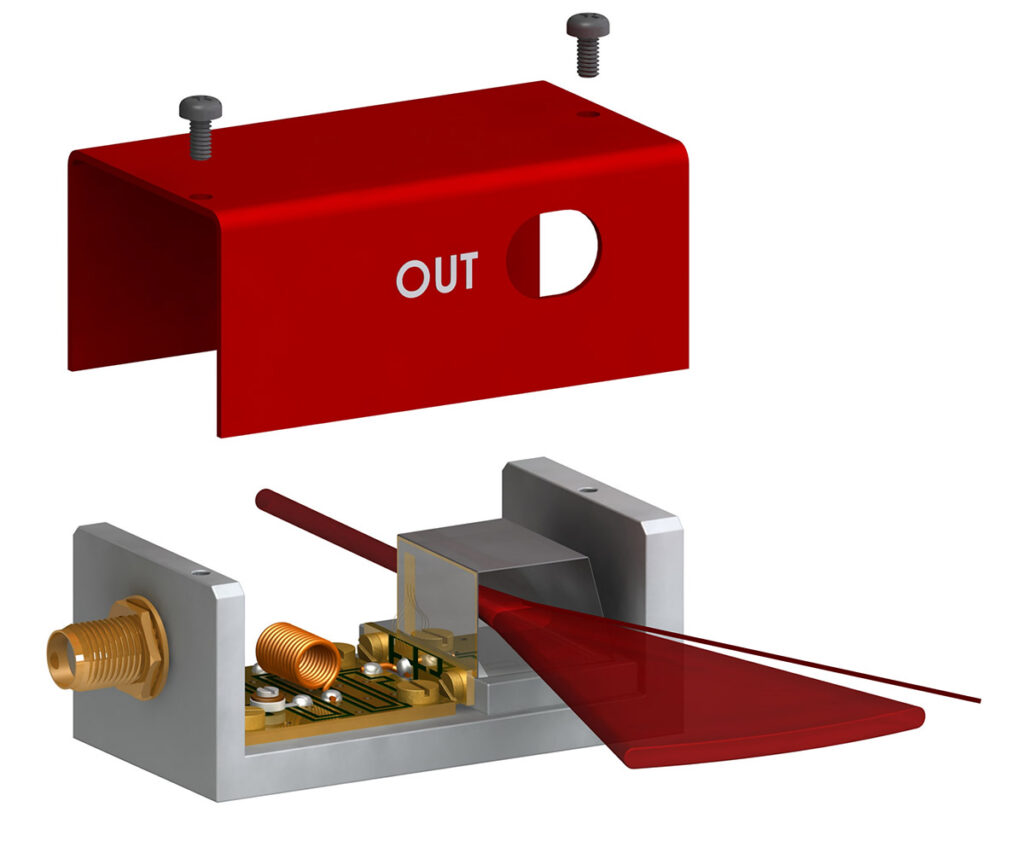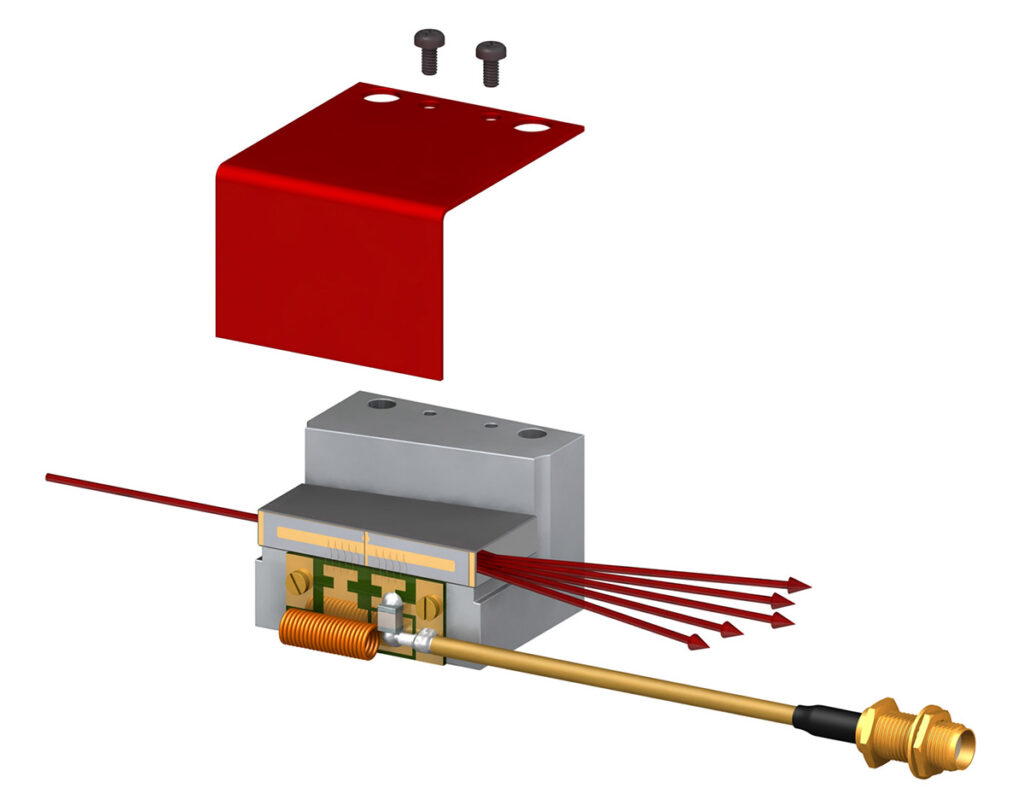Acousto-optic effects on the light beam
In summary, the Bragg interaction has four basic properties which are highly used in the devices. Some of the properties are coexisting in all devices: for instance, a modulator is also a fixed frequency shifter, a deflector can also be used as a variable shifter or modulator.
The main difference between each device is due to the design strategy which is different and most often antagonist to match the application ‘s purposes. At this step, it is very important for the component designer to work closely with the applications engineers.
1. Deflection
The angular deviation of the diffracted beam is proportional to the acoustic frequency. Deflectors are based on this principle.

2. Amplitude modulation (Intensity)
The diffracted beam intensity is a function of the acoustic power. Modulators, Q-switches and Pulse Pickers use this property.

3. Frequency shifting
A frequency shift is introduced by the acoustic interaction (equal to +/- the acoustic frequency F). So, any acousto-optic device can be used as a fixed or variable frequency shifter.

4. Tunable Wavelength Filtering
Wavelength selection can be carried out with large spectral band sources since only one wavelength will match the Bragg condition. This property is used in acousto-optical tunable filters.

